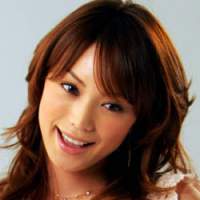Dear Alice,
I just don't get it. I go to the drugstore and there are all kinds of crazy products that claim to give you a "small face." I've seen facials and massages for the same purpose. Then today I saw a magazine cover with "small-face hairstyles," which I guess are supposed to make your face look smaller. What is the big deal with having a small face? Better yet, what the heck IS a small face? I can't tell, even after more than five years in Japan.
Sally C., Omiya, Saitama Prefecture
Dear Sally,
To be honest, I wasn't sure I could face another question on physical appearance, coming as yours did right on the heels of last month's query about bowlegs. I haven't been able to stop checking my limbs for signs of impending crookedness, and now I have to worry if my face is the right size? But you piqued my curiosity, and a quick check proved you're on top of a trend -- small faces are big!
The expressions kogao (small face) and kao ga chiisai (having a small face) came into vogue around the mid 1990s, first used for models and celebrities who were thought to look particularly stylish because they had good overall proportions and facial features that made their faces look small and attractive. The beauty industry picked up on the talk, and began to offer products and services to cater to the new consciousness about face size.
One of the first successful small-face products was a face cream introduced by Shiseido Co. in 1996. Called Lostalot (as in, "She lost a lot of her face"), it worked to make the face look smaller by tightening the skin, and contained caffeine to break down subcutaneous facial fat. It was an instant hit, and the next year ranked in the top five on magazine Nikkei Trendy's annual hit-product list.
A spate of "kogao goods" followed, including masks, chin slings and any number of face creams. Beauty maven Fumiko Inudo has built an entire business around books, videos and seminars that teach facial exercises to make your face smaller. Women's magazines offer regular features on how to use cosmetics and hairstyles to achieve the small-face look.
But even with this information in hand, I couldn't begin to tell you what qualifies as a small face. So I paid a visit to Ruriko Takano, an expert in the psychology of beauty at Shiseido. She explained that it's not a matter of absolute size but of good balance in facial features.
"Someone who is seen as having a small face may have features such as large eyes, a small chin and not much space around the mouth," Takano explained. "The kogao look also requires some depth and dimension in the features so the face doesn't appear broad and flat." She reported that Japanese of both sexes, when asked to rate different faces, tend to favor female faces that look childish and innocent. "Such faces seem to be attractive to us because they stimulate nurturing feelings."
Height and build also enter into the small-face equation because any face will appear smaller when perched atop a long, leggy body. The ideal seems to be having a head that makes up one-eighth of your total height, expressed in Japanese as hattoshin (literally, eight-heads-body). This, my friend Yoshiko told me, is the head-body ratio most Westerners have, while Japanese noggins are more likely to be bigger in proportion to the body. That body type worked fine when Japanese wore kimono and big hair, she said, but makes it harder to look stylish in Western clothing.
To build your powers of kogao recognition, try searching out some famous examples. Easy ones to spot are models Yuri Ebihara (whose photo graces our column today) and Moe Oshikiri. Another is actress Manami Konishi, who usually ranks number one on kogao lists compiled by the Japanese media, closely followed by minimugged colleagues like pop singers Namie Amuro and Ayumi Hamasaki.
I asked Takano if she had any idea why the kogao boom developed when it did. Her theory is that tastes in faces have changed along with the media that present them. "A big face is an asset in a stage actress, because the audience can see her facial expressions more easily," she noted. "But movies, television and the Internet have brought celebrities closer to us and changed what we find attractive."



















With your current subscription plan you can comment on stories. However, before writing your first comment, please create a display name in the Profile section of your subscriber account page.